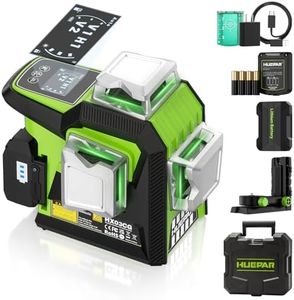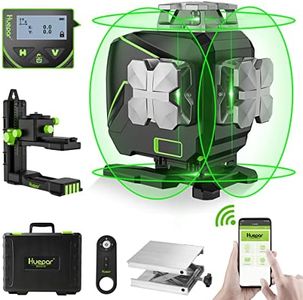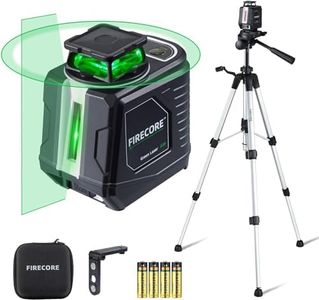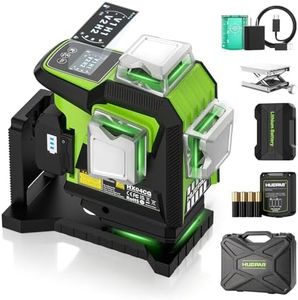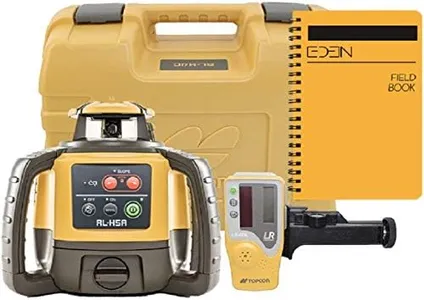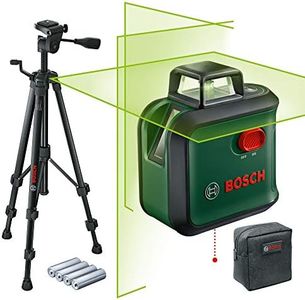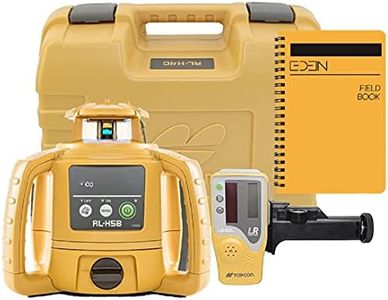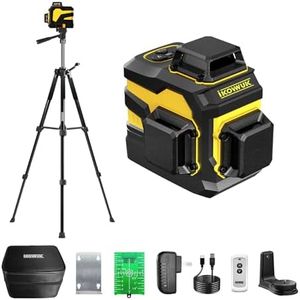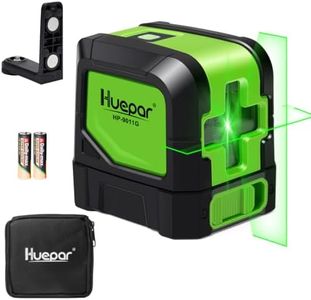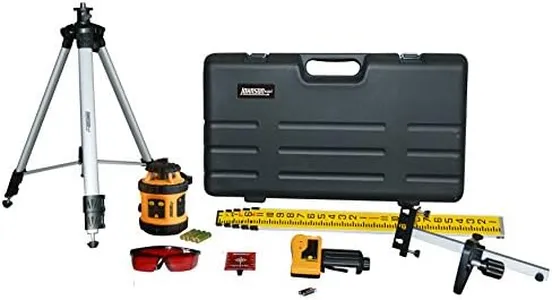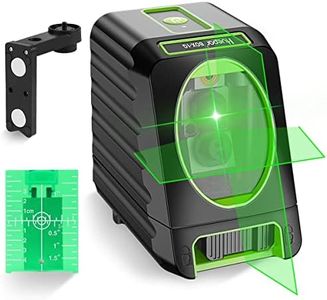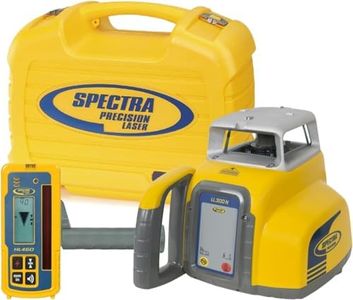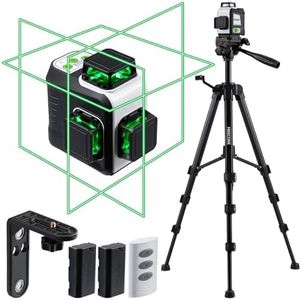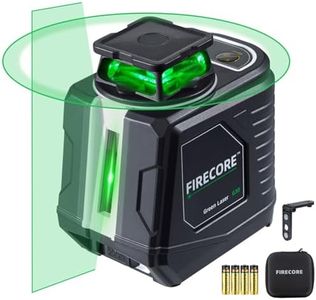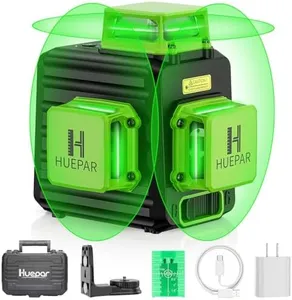We Use CookiesWe use cookies to enhance the security, performance,
functionality and for analytical and promotional activities. By continuing to browse this site you
are agreeing to our privacy policy
10 Best Laser Levels
From leading brands and best sellers available on the web.Buying Guide for the Best Laser Levels
Choosing the right laser level can make many DIY and professional tasks, like hanging shelves, aligning tiles, or laying foundations, much easier and more accurate. Laser levels project perfectly straight lines onto surfaces, helping you work more efficiently and precisely. When picking a laser level, it's important to understand the different features and specifications so you can select one that matches your tasks and environment.Laser Type (Red vs. Green)Laser levels commonly use red or green beams. Red lasers are usually easier on the battery and work perfectly well indoors or in low-light settings. Green lasers are brighter and easier to see in daylight or over longer distances, but they often cost more and may drain batteries faster. If you mostly work inside on small or medium projects, a red beam is likely enough. For outdoor use or larger, well-lit areas, choosing a green laser might give you better visibility.
Projection (Line vs. Dot vs. Rotary)Laser levels can project different patterns: single lines, multiple crossing lines, dots, or a 360-degree rotary line. Line lasers are great for most basic tasks, letting you line up objects both horizontally and vertically. Dot lasers project points, which are perfect for transferring points from floor to ceiling. Rotary lasers are more advanced and spin a beam to create a continuous line all the way around a room, ideal for big areas and for leveling outdoors. Your choice should depend on what you're measuring: wall tasks need lines, layout and transferring points need dots, and large construction or landscaping projects benefit from rotary models.
RangeThe range is the maximum distance the laser beam remains visible and accurate. Some laser levels work up to 10 meters, while others can project lines over 30 meters or even more with a separate detector. Shorter-range models are suitable for indoor or smaller tasks, while long-range models are necessary for outdoor work or for large rooms and construction sites. Pick the range based on your typical working distance; don't pay extra for super-long ranges if you always work indoors and up close.
AccuracyAccuracy tells you how close the laser lines are to being perfectly straight or level, usually measured in millimeters per meter. Typical models offer ±0.3 to ±0.8 mm/m. The lower the number, the more precise the lines. If you need to hang a picture, less accuracy is fine; for installing cabinetry or construction where precision is crucial, look for models with higher accuracy ratings.
Self-Leveling CapabilitySelf-leveling lasers can automatically adjust themselves to remain level, usually within a certain tilt range (like 4 degrees). This saves you time and reduces mistakes, compared to manual leveling. For most users, self-leveling is a must-have since even a small error can throw off your results. Unless your work is strictly decorative or doesn't need much accuracy, choose a self-leveling model.
Mounting OptionsLaser levels are often used with mounting brackets, tripods, or magnetic bases so they can be attached to walls, poles, or other surfaces. This feature is important for hands-free operation and getting the laser at the height or angle you need. Check for compatibility with common tripods or for built-in mounts if your projects require special positioning.
Durability and ProtectionMany laser levels are used on construction sites or in tough environments, where they can get dropped, splashed, or knocked around. Look for models with sturdy housings and some protection against dust and water, often rated as IP54 or higher. If you're using the tool regularly in demanding places, this feature will help your investment last longer.
